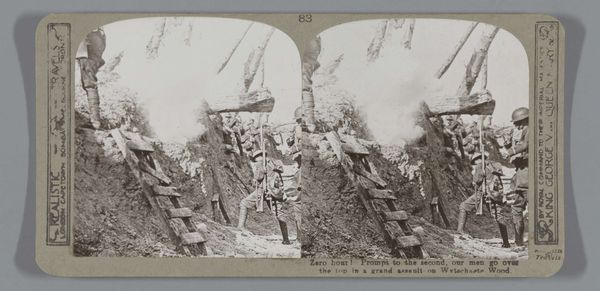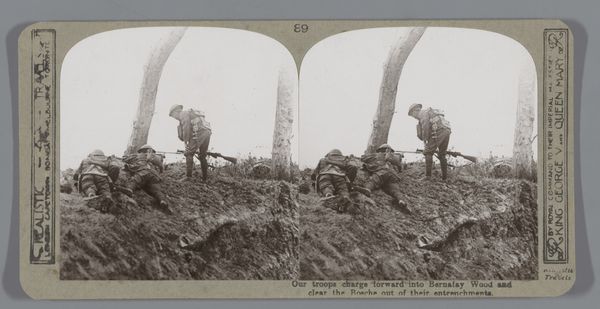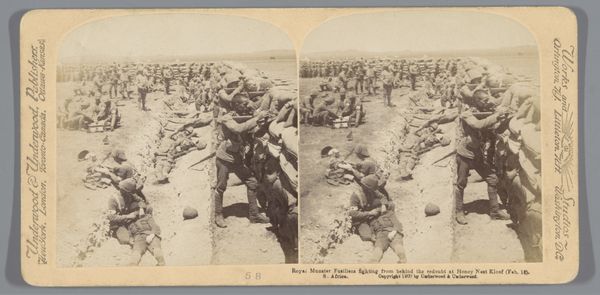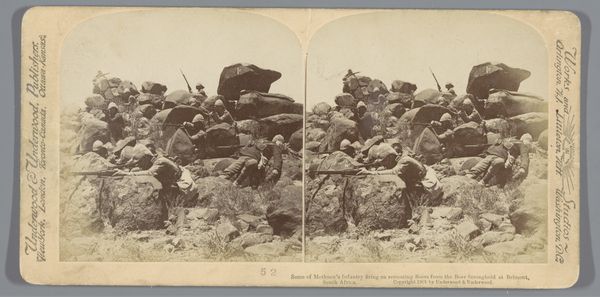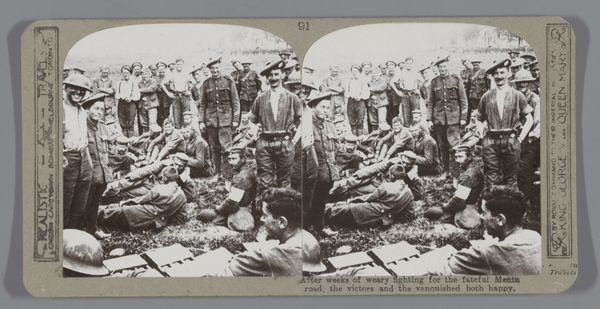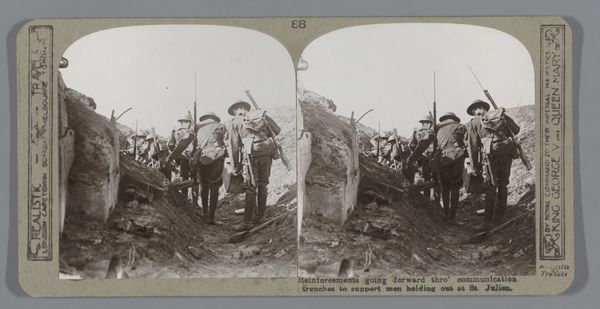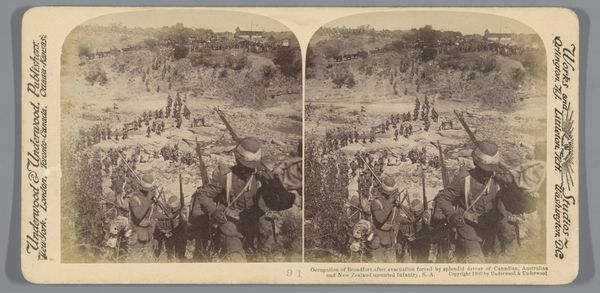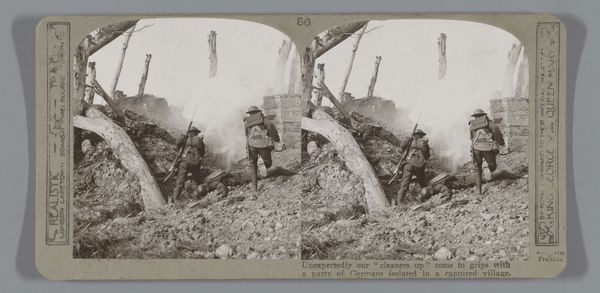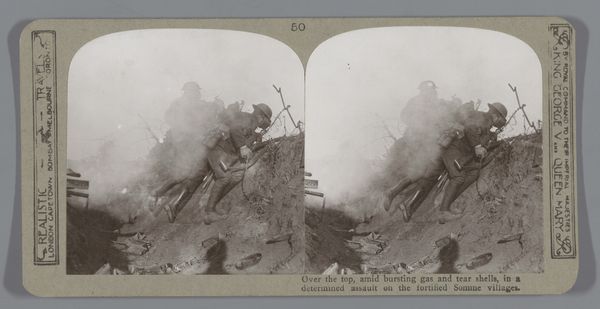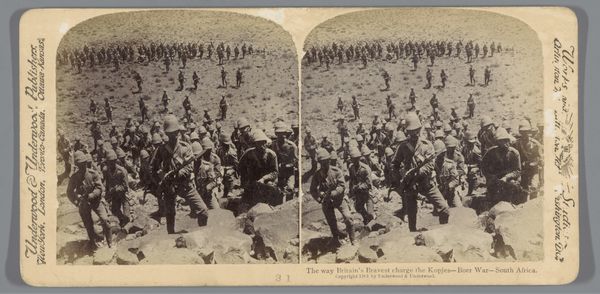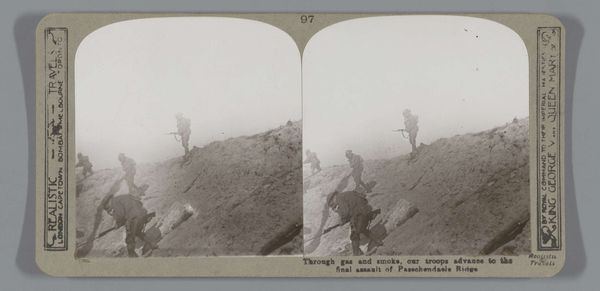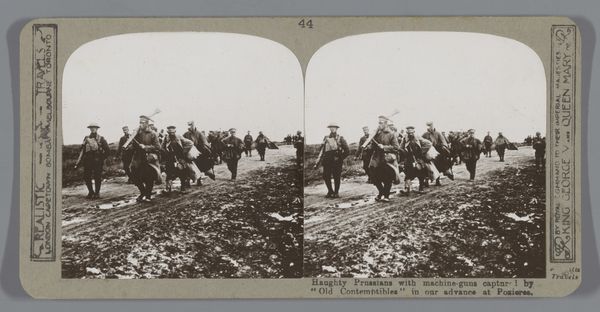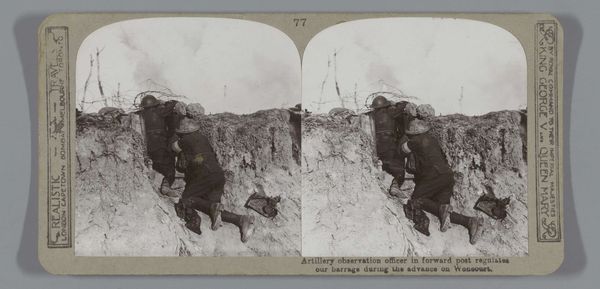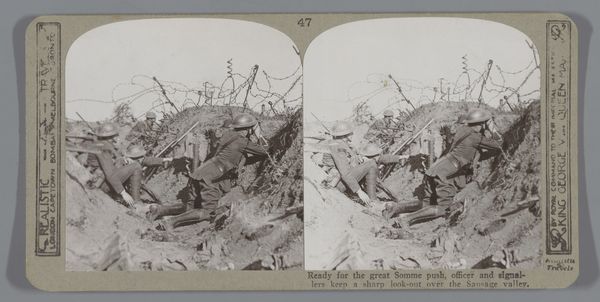
North Country troops bomb Hun machine-gunners out of their lairs in Polygon Wood, September, 1917 1917 - 1919
0:00
0:00
print, photography, gelatin-silver-print
# print
#
war
#
landscape
#
photography
#
gelatin-silver-print
#
realism
Dimensions: height 85 mm, width 170 mm
Copyright: Rijks Museum: Open Domain
Editor: This gelatin-silver print, taken between 1917 and 1919, depicts North Country troops bombing German machine-gunners in Polygon Wood in September of 1917. The stark imagery of soldiers in a blasted landscape is incredibly striking. What symbolic weight does an image like this carry? Curator: The immediate and lasting weight is, of course, death and the grotesque distortions of war, here represented through a photographic document purporting to be ‘realistic.’ Do you see, however, how even in what we’re told is realism, the symbols speak louder than any one soldier's reality? Editor: I think so. There's that single soldier raising his arms— is that a sign of victory? Curator: Precisely! That upraised arm, mirroring others behind him, isn’t merely a gesture of triumph. It resonates with ancient iconography - consider Nike, the Greek goddess of victory - embedded deep in our collective cultural memory. This connects their localized victory to a grander narrative of human triumph. And note the "Hun machine gunners"... "Hun" functioned as a dehumanizing epithet throughout the war. The image taps into an ancient fear of barbarian invasion, a kind of cultural defense mechanism. Do you see how those fallen figures slumped on the earth take on meaning in this light? Editor: Yes, they almost seem to embody a sacrifice, both literal and symbolic, within this narrative of war. It makes you wonder how much is fact and how much is deliberately constructed messaging. Curator: Indeed. Consider too, how this image would serve as a mnemonic device. When viewers saw it, what values were being re-asserted? What emotions were stirred up? War imagery then, becomes less about accurately showing and more about continually *re-presenting* cultural ideals. Editor: So, this seemingly realistic depiction isn't just showing us a scene, it's reinforcing beliefs. It is prompting a nation to remember a certain version of their history. Thanks, this has given me a lot to consider about the cultural role of photography.
Comments
No comments
Be the first to comment and join the conversation on the ultimate creative platform.
